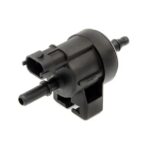A blown Fuel Gauge Fuse can be a frustrating issue, leaving you guessing about how much fuel is in your tank. This problem often occurs in older vehicles like the MG MGB, but can happen in any car. Understanding the potential causes and troubleshooting steps can help you get your fuel gauge working again.
Common Causes of a Blown Fuel Gauge Fuse
A blown fuel gauge fuse is almost always caused by a short circuit somewhere in the fuel gauge system. This means that a wire is touching metal, grounding out the circuit and causing excessive current flow that blows the fuse. Several components can contribute to this issue:
-
Faulty Fuel Sender Unit: The fuel sender unit sits inside the fuel tank and measures the fuel level. If the sender unit is damaged or corroded, it can cause a short circuit. Replacing a fuel sender can sometimes introduce a new short if not installed carefully.
-
Wiring Issues: Damaged or frayed wiring anywhere along the fuel gauge circuit, from the fuse box to the sender unit, can create a short. This often occurs in areas where wires rub against sharp edges or are exposed to the elements. Inspecting the wiring harness for damage is crucial.
-
Gauge Problems: While less common, a faulty fuel gauge itself can also cause a short circuit and blow the fuse.
-
Voltage Stabilizer: In some classic cars like the MG MGB, a voltage stabilizer regulates the power supplied to the fuel gauge. A malfunctioning stabilizer can cause voltage fluctuations leading to fuse failure. Disconnecting the stabilizer can help isolate this as the problem.
Identifying the Fuel Gauge Fuse
Before troubleshooting, locate the correct fuse. Consult your vehicle’s owner’s manual for the fuse box diagram and the specific fuel gauge fuse. In many cars, it’s part of a circuit that also powers other instruments, such as the temperature gauge or even the wipers. This might provide a clue if multiple gauges stop working simultaneously. The MG MGB, for example, often uses a green circuit for these components.
Troubleshooting Steps
-
Safety First: Disconnect the negative battery terminal before working on any electrical components.
-
Visual Inspection: Carefully examine the wiring connected to the fuel sender unit and along the wiring harness for any visible damage, fraying, or loose connections. Look for areas where the wiring might be rubbing against metal.
-
Isolate the Circuit: If the blown fuse is part of a circuit that powers multiple components, try disconnecting each component one at a time to isolate the source of the short. In an MG MGB, this might involve checking the handbrake lever switch or other components on the green circuit.
-
Test the Voltage Stabilizer (if applicable): If your car uses a voltage stabilizer for the fuel gauge, disconnect it and see if the fuse still blows. If the fuse doesn’t blow with the stabilizer disconnected, the stabilizer might be the culprit.
-
Check the Fuel Sender: With the battery disconnected, disconnect the wire from the fuel sender unit. Replace the fuse and reconnect the battery. If the fuse doesn’t blow, the short is likely within the sender unit or its wiring.
-
Check the Fuel Gauge: If the sender and wiring check out, the fuel gauge itself might be faulty. This is less common but can be tested by a qualified mechanic.
Conclusion
Troubleshooting a blown fuel gauge fuse requires a systematic approach. By understanding the common causes and following these troubleshooting steps, you can often pinpoint the problem and get your fuel gauge working again. If you’re not comfortable working with electrical systems, it’s always best to consult a qualified mechanic. A properly functioning fuel gauge is essential for avoiding running out of fuel and ensuring a smooth driving experience.

